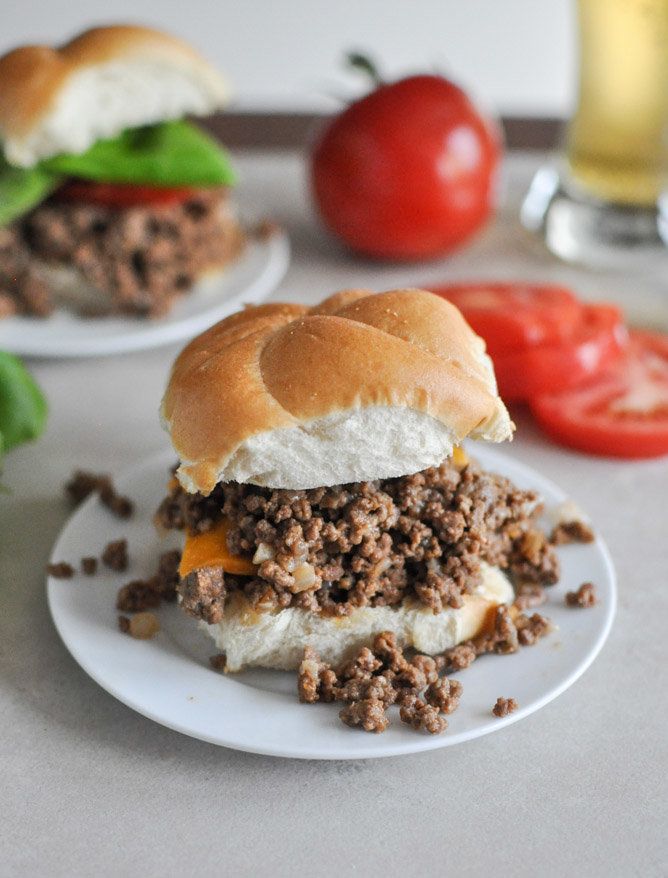Meat has been such a popular grocery item during the coronavirus pandemic that sales increased nearly 50% in early May from a year earlier, according to Nielsen. Now shoppers may be stocking up even more with the possibility of meat shortages.
Stashing meat and poultry in the freezer makes it last longer and helps preserve its flavor and nutrient content, experts say. But when you’re ready to cook it, what’s the best and safest way to defrost meat? Can you cook frozen meat? What about microwaving? We asked food safety experts to answer these and other questions about freezing meat.
The dangers of defrosting meat improperly
Defrosting meat incorrectly increases the risk of foodborne illness, according to Karen Blakeslee, extension associate and Rapid Response Center coordinator at Kansas State University.
“You cannot see bacteria with the naked eye, so using safe food handling practices reduces the chances of bacteria to grow,” Blakeslee said.
So, don’t take shortcuts during the defrosting process.
“Taking a few extra minutes to plan ahead can save a lot of time, reduce the chance of foodborne illness and reduce food waste,” Blakeslee said.
Here’s why freezing meat keeps it safe to eat in the first place
“Freezing is a quick and convenient way to preserve meats at home because meat is made up of a high percentage of water that forms crystals that can be managed in size and number just by proper freezing and defrosting practices,” said Kantha Shelke, food scientist and principal at Corvus Blue and food science communicator at the Institute of Food Technologists.
It’s best to freeze meat quickly to a very low temperature in freezer-safe packaging, such as butcher paper, aluminum foil, freezer bags or airtight containers, Shelke said. Leaving meat in its store packaging may lead to freezer burn, since the packaging usually won’t keep air out.

Defrosting meat should be done slowly, so that its temperature never exceeds 40 degrees Fahrenheit, the point where bacteria start to grow rapidly, according to the U.S. Department of Agriculture.
Once meat is defrosted, it’s usually best to avoid refreezing it, unless you cook it first, Shelke said. Refreezing diminishes flavor and quality, and could lock in bacteria if the meat wasn’t defrosted correctly.
Here are the four safest ways to defrost meat.
1. In the refrigerator
Meat and poultry should never be defrosted at room temperature ― the exterior will warm up faster than the interior and encourage bacteria growth, Shelke said.
To keep a steady, chilled temperature, the refrigerator is the safest place to defrost all types of meat, including steaks, ground meat and poultry, she said. Place packages of meat on a plate to catch any liquid that drips off and store in the lower part of your refrigerator.
“Thawing in the refrigerator depends on the amount of meat to thaw, so it takes some planning,” Blakesee said.
A pound of ground beef may take a day to defrost in the refrigerator. Larger cuts and pieces with bones may take two to three days, said Blakeslee, who specializes in food science.
Thawed meat and poultry can be safely stored in the refrigerator for up to five days before cooking, as long as it hasn’t been exposed to temperatures above 40 degrees, Shelke said.
2. Submerge in cold water
Cold ― but never warm or hot ― water can defrost meat and poultry quickly.
Place the meat in a leak-proof container and either submerge it in a pan of cold water, changing the water every half hour, or leave it under running cold water, Blakeslee said.
“The cold-water method is faster” than the refrigerator, she said. “A one-pound package of ground beef may take an hour, but three to four pounds of meat may take two to three hours.”
3. Use the microwave’s defrost setting
The defrost setting on your microwave is a safe, quick way to thaw meat, but there are a few caveats. Always consult your microwave’s instruction manual first, Shelke said.
“Microwave defrosting is very fast, but does not produce the evened thawing that one gets from thawing in the refrigerator or in cold water,” she said. “In some cases, some parts of the meat can get cooked and dry out, while the other parts are still thawing.”
If you defrost meat in the microwave, cook it immediately, Shelke emphasized. Along with the uneven heating, microwave thawing also fosters warmth and moisture, encouraging bacteria growth.
The USDA recommends removing frozen meat and poultry from any packaging before defrosting in the microwave and placing it in a microwave-safe dish. While it defrosts, rotate and break apart any clumps of meat.
4. Cook it from frozen
While you may not get the most tender meat when cooking it from frozen, it’s safe. But according to Shelke, cooking times increase by about 50% compared with fresh or defrosted meat.
Some cooking methods work better than others, too. Oven-roasting frozen chicken or other meat is one of the safest choices, she said, because the outside heats up first and the longer cooking ensures that the interior reaches a safe temperature.
Shelke recommends using only thawed meat and poultry in slow cookers, and says to avoid deep frying or grilling large pieces of frozen meat and poultry.
When cooking, use a meat thermometer to make sure the internal temperature reaches 145 degrees Fahrenheit for beef, pork, veal and lamb, 160 for ground meat, and 165 for all poultry, according to the USDA.
